| Listing 1 - 10 of 16 | << page >> |
Sort by
|

ISBN: 0874805139 9780874805130 Year: 1996 Publisher: Salt Lake City University of Utah Press
Abstract | Keywords | Export | Availability | Bookmark
 Loading...
Loading...Choose an application
- Reference Manager
- EndNote
- RefWorks (Direct export to RefWorks)
Archaeology --- Methodology. --- Philosophy. --- Archéologie --- Méthodologie --- Philosophie --- Methodology --- Philosophy
Book
ISBN: 3319032747 3319000764 3319000772 Year: 2013 Publisher: Cham : Springer International Publishing : Imprint: Springer,
Abstract | Keywords | Export | Availability | Bookmark
 Loading...
Loading...Choose an application
- Reference Manager
- EndNote
- RefWorks (Direct export to RefWorks)
This manual pulls together—and illustrates with interesting case studies—the variety of specialized and generalized archaeological research strategies that yield new insights into science. Throughout the book there are templates, consisting of questions, to help readers visualize and design their own projects. The manual seeks to be as general as possible, applicable to any society, and so science is defined as the creation of useful knowledge—the kinds of knowledge that enable people to make predictions. The chapters in Part I discuss the scope of the archaeology of science and furnish a conceptual foundation for the remainder of the book. Included are basic principles of behavioral archaeology that, because they privilege people-artifact interactions, can be employed to frame new research on science. The varieties of scientific knowledge—from observations to theories and everything in between—are defined in behavioral terms. Next, Part II presents several specialized, but widely practiced, research strategies that contribute to the archaeology of science. These chapters contain fascinating case studies from the archaeological literature that illustrate how these strategies can be employed to formulate and answer research questions. In order to thoroughly ground the manual in real-life applications, Part III presents lengthy case studies that feature the use of historical and archaeological evidence in the study of scientific activities. Many of these chapters draw on unpublished archaeological reports that bring to light the material dimension of intriguing—sometimes once secret—science and technology projects, such as the Manhattan Project, Project Rover, and Thomas Edison’s “invention factories”, to name a few. The Archaeology of Science: Studying the Creation of Useful Knowledge stimulates readers because it calls attention to a great many archaeological projects already accomplished and shows readers how they can contribute to expanding and enriching the archaeology of science. This original concept provides both advanced undergraduates and graduates, as well as professional archaeologists, with a cornucopia of strategies and tactics for conducting original—indeed, exciting—research leading to term papers, theses, dissertations, and eventually publications. .
Archaeology. --- Science -- History. --- History & Archaeology --- Physical Sciences & Mathematics --- Sciences - General --- Archaeology --- Science, Ancient. --- Science --- History. --- Ancient science --- Science, Primitive --- Social sciences. --- Philosophy and science. --- Anthropology. --- Social Sciences. --- Philosophy of Science. --- History --- Philosophy. --- Normal science --- Philosophy of science --- Human beings --- Archeology --- Anthropology --- Auxiliary sciences of history --- Antiquities --- Science and philosophy --- Primitive societies --- Social sciences
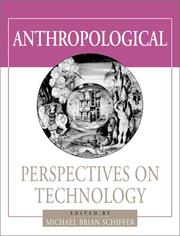
ISBN: 0826323693 Year: 2001 Publisher: Albuquerque (N.M.) : University of New Mexico press,
Abstract | Keywords | Export | Availability | Bookmark
 Loading...
Loading...Choose an application
- Reference Manager
- EndNote
- RefWorks (Direct export to RefWorks)
Anthropology. --- Archaeology. --- Industries, Primitive. --- Technology --- Social aspects. --- Anthropology --- Archaeology --- Industries, Primitive --- Primitive technology --- Technology, Primitive --- Ethnology --- Industrial arts --- Material culture --- Archeology --- Auxiliary sciences of history --- History --- Antiquities --- Human beings --- Social aspects --- Primitive societies --- Social sciences
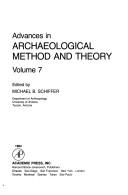
ISBN: 0120031078 9780120031078 Year: 1984 Publisher: Orlando, FL: Academic press,
Abstract | Keywords | Export | Availability | Bookmark
 Loading...
Loading...Choose an application
- Reference Manager
- EndNote
- RefWorks (Direct export to RefWorks)
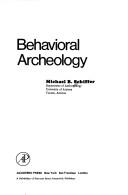
ISBN: 0126241503 Year: 1976 Publisher: New York : Academic Press,
Abstract | Keywords | Export | Availability | Bookmark
 Loading...
Loading...Choose an application
- Reference Manager
- EndNote
- RefWorks (Direct export to RefWorks)
Archaeology --- Ethnoarchaeology. --- Human behavior --- Indians of North America --- Pueblo Indians --- Methodology. --- History. --- Implements --- Implements. --- Joint site, Ariz. --- Arizona --- Antiquities.
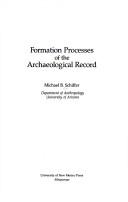
ISBN: 0826309631 082630964X Year: 1987 Publisher: Albuquerque (N.M.) : University of New Mexico press,
Abstract | Keywords | Export | Availability | Bookmark
 Loading...
Loading...Choose an application
- Reference Manager
- EndNote
- RefWorks (Direct export to RefWorks)
Archaeology --- Archaeology --- Methodology. --- Philosophy.
Digital
ISBN: 9783319000770 Year: 2013 Publisher: Heidelberg Springer International Publishing
Abstract | Keywords | Export | Availability | Bookmark
 Loading...
Loading...Choose an application
- Reference Manager
- EndNote
- RefWorks (Direct export to RefWorks)
This manual pulls together—and illustrates with interesting case studies—the variety of specialized and generalized archaeological research strategies that yield new insights into science. Throughout the book there are templates, consisting of questions, to help readers visualize and design their own projects. The manual seeks to be as general as possible, applicable to any society, and so science is defined as the creation of useful knowledge—the kinds of knowledge that enable people to make predictions. The chapters in Part I discuss the scope of the archaeology of science and furnish a conceptual foundation for the remainder of the book. Included are basic principles of behavioral archaeology that, because they privilege people-artifact interactions, can be employed to frame new research on science. The varieties of scientific knowledge—from observations to theories and everything in between—are defined in behavioral terms. Next, Part II presents several specialized, but widely practiced, research strategies that contribute to the archaeology of science. These chapters contain fascinating case studies from the archaeological literature that illustrate how these strategies can be employed to formulate and answer research questions. In order to thoroughly ground the manual in real-life applications, Part III presents lengthy case studies that feature the use of historical and archaeological evidence in the study of scientific activities. Many of these chapters draw on unpublished archaeological reports that bring to light the material dimension of intriguing—sometimes once secret—science and technology projects, such as the Manhattan Project, Project Rover, and Thomas Edison’s “invention factories”, to name a few. The Archaeology of Science: Studying the Creation of Useful Knowledge stimulates readers because it calls attention to a great many archaeological projects already accomplished and shows readers how they can contribute to expanding and enriching the archaeology of science. This original concept provides both advanced undergraduates and graduates, as well as professional archaeologists, with a cornucopia of strategies and tactics for conducting original—indeed, exciting—research leading to term papers, theses, dissertations, and eventually publications. .
Philosophy of science --- Philosophy of science --- Social sciences (general) --- Ethnology. Cultural anthropology --- Archeology --- sociale wetenschappen --- wetenschapsfilosofie --- archeologie
Book
ISBN: 9783319000763 Year: 2013 Publisher: Paris ; Berlin ; Heidelberg [et al.] Springer
Abstract | Keywords | Export | Availability | Bookmark
 Loading...
Loading...Choose an application
- Reference Manager
- EndNote
- RefWorks (Direct export to RefWorks)
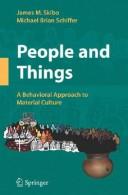
ISBN: 0387765271 0387765247 0387771328 Year: 2008 Publisher: New York, NY : Springer New York : Imprint: Springer,
Abstract | Keywords | Export | Availability | Bookmark
 Loading...
Loading...Choose an application
- Reference Manager
- EndNote
- RefWorks (Direct export to RefWorks)
People and Things: A Behavioral Approach to Material Culture James M. Skibo, Department of Anthropology, University of Illinois, Normal, IL Michael B. Schiffer, Department of Anthropology, University of Arizona, Tucson, AZ The core of archaeology is the relationship between people and things. Left without informants and, in many cases, textual data, archaeologists strive to reconstruct past life through the window of artifacts: things made, used, and modified by individuals while participating in the activities of everyday life. According to behavioral archaeologists, our ability to understand the relationship between people and things in the present is the foundation for archaeological reconstruction of the past. This comprehensive text sets forth a theory for understanding the relationship between people and things. Humans, whether in the distant past or in our current world, make choices while inventing, developing, replicating, adopting, and using their technologies. A wide arc of factors, from utilitarian to social and religious can affect these choices. The theoretical model presented here provides the means to understand how people, whether it be Paleolithic stone tool makers or 21st century computer designers and users, negotiate these myriad factors throughout the artifact’s life history. While setting forth a behavioral theory, the book also engages the ideas of other competing theories, focusing especially on agency, practice, and selectionism. Six case studies form the core of the book, and provide clear examples of how the theory can be applied to a range of artifacts and people from prehistoric North American ball courts and smudge pits to the first electric cars and 19th century electromagnetic telegraph technologies. This book provides the reader, for the first time between two covers, a wide array of examples that can guide their own work. Archaeology and anthropology graduate students will find this book of interest. Twenty years in the making, this work will be an essential tool for new scholars as well as experienced members in the field of archaeology or any researcher who investigates technology.
Material culture. --- Human behavior. --- Social archaeology. --- Archaeology --- Action, Human --- Behavior, Human --- Ethology --- Human action --- Human beings --- Human biology --- Physical anthropology --- Psychology --- Social sciences --- Psychology, Comparative --- Culture --- Folklore --- Technology --- Methodology --- Behavior --- Archaeology. --- Anthropology. --- Life sciences. --- Life Sciences, general. --- Biosciences --- Sciences, Life --- Science --- Archeology --- Anthropology --- Auxiliary sciences of history --- History --- Antiquities --- Primitive societies
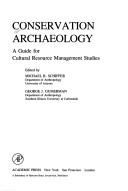
ISBN: 0126241600 Year: 1977 Publisher: New York : Academic Press,
Abstract | Keywords | Export | Availability | Bookmark
 Loading...
Loading...Choose an application
- Reference Manager
- EndNote
- RefWorks (Direct export to RefWorks)
Archaeology --- Cultural property --- Research --- Protection
| Listing 1 - 10 of 16 | << page >> |
Sort by
|

 Search
Search Feedback
Feedback About UniCat
About UniCat  Help
Help News
News